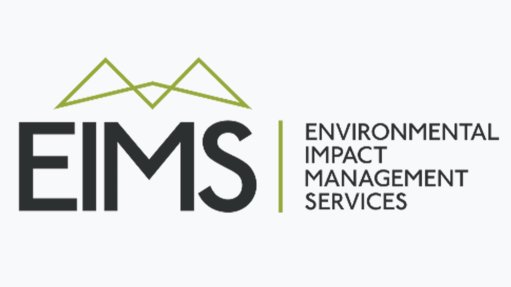Data, monitoring needed as water tariff increases threaten to become core business cost
Beyond the challenges to water security presented by population growth, urbanisation, poor infrastructure and water treatment, companies must start measuring their water use throughout their processes and leveraging this information to ensure the efficient use of this resource, water engineering and services company Talbot CEO Carl Haycock has advised.
Water tariffs have risen by about 10% to 15% over the past few years and, if this rate of price escalations continues for the next five to ten years, water could become a serious cost to businesses.
"Water was considered to be low-cost and of low significance, but could end up becoming more expensive than many of the raw materials manufacturers use.
"A sustainable business must be supported by the water it requires, which is one of the water risks we aim to solve for our clients," he said during a seminar on industrial water optimisation, in Woodmead, Gauteng, on September 4.
The recognition of the risks presented by insufficient or poor-quality water is growing, and water risks are more significant than climate change, as well as driven by it, because the impacts from water insecurity are immediate and also catchment-specific, unless there are inter-basin transfer systems, he noted.
"The fact that water risks are catchment-specific presents a challenge, particularly in terms of urbanisation and population growth, because the water must be shared between every business and person, and every new company or person adds pressure on the resource."
Compounding this is poor water treatment and metering by municipalities. Companies cannot depend on the quality of water provided by some municipalities and, therefore, carry the risks of unsuitable water quality negatively impacting on their operations and reputations.
In addition to this, companies should start measuring and monitoring their own water use from when they receive or abstract it; during use in processes, recovery and treatment; and then discharge and/or reuse.
This was to ensure they had the information on hand to counter billing errors and to pay a fair price for the water they used, as well as to use the information to improve water use efficiency in the processes, he advised.
Further, the impact of a lack of water on business performance owing to lost production can run into millions of rands. Some companies have relocated from regions in South Africa, owing to water insecurity, to other regions, including beverage and chicken producers, among others.
"Logistically, dealing with water disruptions involves huge costs and has a massively negative impact on the efficiency of operations. These are some of the risks that companies need to consider in the context of water security," said Haycock.
Similarly, companies needed to consider whether their suppliers were able to produce the inputs companies used if the suppliers experienced water disruptions, he noted.
However, in most industries, it is relatively easy to achieve a 10% to 20% improvement in water use efficiency, especially if it has not been a focal area for the business, thereby reducing the risks business face from water supply.
"Understanding the data around your water use is critical. One of our consumer goods clients identified that different behaviour during night shifts contributed to a 20% greater use of water during that shift," he illustrated.
Companies should start with measurements to get data and then use machine learning and AI systems to analyse and understand their data.
"From the data, companies can pick up behavioural impacts, leaks and losses and also more readily identify easy opportunities for improvements, as well as understand how much water they use in their different processes.
"There are also intra- and inter-process opportunities, with the potential for companies to either treat and reuse water directly in a process, or to treat and use the water from another process. These are some of the considerations companies should look at in detail," Haycock recommended.
Often, recovered process water can require relatively low levels of treatment to reuse in various processes, as informed by the company's data.
"Good water management makes sense because it saves money across processes and adds value to production, as well as potentially increasing production," he noted.
Companies should look at the opportunities available to them, and bring water security considerations into these deliberations.
Using less water from municipal sources means that companies are less exposed to associated risks. Additionally, being more water efficient will also reduce water bills and discharge costs and penalties.
Further, investments in water management constitute investments in a company's own control processes.
"Companies that are dependent on high-quality water as an input, such as the pharmaceuticals and food and beverage industries, will need to optimise water throughout their processes and install solutions as needed to mitigate various risks," said Haycock.
Meanwhile, Talbot had developed and commissioned a water recovery system for a chicken abattoir in Uitenhage, which started operating in April and ramped up in July. The solution was designed to recover 75% of the abattoir's water, and optimisations had enabled the solution to recover 87% of the water, said Talbot process engineer Theasha Naidoo.
"We recover more than one-million litres a day, which also provides water for more than 13 000 people in the local community," she pointed out.
The effluent from chicken abattoirs is not easy to treat, and Talbot brought in international experts to interrogate the water recovery process and make it robust.
Similarly, albeit on an older project, a brewery in Tanzania faced water restrictions of up to 50% of their average needs and was also reliant on high-quality water as an input, without which they could not produce, said Talbot technical director Alex Hesketh.
"While this constituted a significant risk to the business, it also presented an opportunity for water recovery. Talbot was involved in developing and commissioning this plant, which recovered two-thirds of the brewery's water and treated it to potable standards.
"Although the brewery took a business decision not to use recovered water in its products, the plant reduced by half the water used by the company in its processes and reduced operational expenditure costs.
"The solution also reduced the requirement to treat incoming water because there was less volume lost down the drain from more efficient primary water treatment processes," he highlighted.
A water recovery system had been developed in Ballito, in KwaZulu-Natal, that treated the recovered water back to potable standards, similar to the system the brewery in Tanzania used, said Haycock.
"In the near future, there will need to be an exponential increase in water recovery in all major urban centres in South Africa and globally to improve water use efficiency and security," he said.
Article Enquiry
Email Article
Save Article
Feedback
To advertise email advertising@creamermedia.co.za or click here
Comments
Press Office
Announcements
What's On
Subscribe to improve your user experience...
Option 1 (equivalent of R125 a month):
Receive a weekly copy of Creamer Media's Engineering News & Mining Weekly magazine
(print copy for those in South Africa and e-magazine for those outside of South Africa)
Receive daily email newsletters
Access to full search results
Access archive of magazine back copies
Access to Projects in Progress
Access to ONE Research Report of your choice in PDF format
Option 2 (equivalent of R375 a month):
All benefits from Option 1
PLUS
Access to Creamer Media's Research Channel Africa for ALL Research Reports, in PDF format, on various industrial and mining sectors
including Electricity; Water; Energy Transition; Hydrogen; Roads, Rail and Ports; Coal; Gold; Platinum; Battery Metals; etc.
Already a subscriber?
Forgotten your password?
Receive weekly copy of Creamer Media's Engineering News & Mining Weekly magazine (print copy for those in South Africa and e-magazine for those outside of South Africa)
➕
Recieve daily email newsletters
➕
Access to full search results
➕
Access archive of magazine back copies
➕
Access to Projects in Progress
➕
Access to ONE Research Report of your choice in PDF format
RESEARCH CHANNEL AFRICA
R4500 (equivalent of R375 a month)
SUBSCRIBEAll benefits from Option 1
➕
Access to Creamer Media's Research Channel Africa for ALL Research Reports on various industrial and mining sectors, in PDF format, including on:
Electricity
➕
Water
➕
Energy Transition
➕
Hydrogen
➕
Roads, Rail and Ports
➕
Coal
➕
Gold
➕
Platinum
➕
Battery Metals
➕
etc.
Receive all benefits from Option 1 or Option 2 delivered to numerous people at your company
➕
Multiple User names and Passwords for simultaneous log-ins
➕
Intranet integration access to all in your organisation


















